Genre: Platform Developer: Ubi Pictures Publisher: Ubi Soft Players: 1 Released: 1999
The release of Super Mario 64 in 1996 marked the beginning of the 3D platformer genre, and for the remainder of the decade various mascots old and new made the transition to 3D — to widely varying degrees of success. Rayman, though a relatively new character, was one of the more successful transitions in the form of 1999s Rayman 2: The Great Escape. The enhanced Dreamcast release in 2000 was one of the few and arguably the best of the 3D platformers available on the system.
While Rayman 2 was developed for the Nintendo 64 and PC originally, the limitations of the Nintendo 64 meant that the higher quality art that had been produced could not be used on the system as it could on PC. With the extra processing power of the Dreamcast, the game could be presented as intended along with a few extras. The game’s director, Michel Ancel, has even singled this version out as the best. While the game has seen ports to many systems since, I would say that as of this writing, it is still the best way to play the game.
The plot (if there needed to be one), revolves around Rayman on a journey to defeat Robo-Pirates from outer space, led by Admiral Razorbeard, who have invaded the Glade of Dreams and imprisoned many of its inhabitants. Rayman takes up this task after escaping the pirates with his friend Globox and the journey begins. There are occasional story scenes throughout the game which are often humorous and quirky much in the style of a Saturday morning cartoon. As with most games in the genre, the story is not something to be taken too seriously, as the journey is always more important than the destination.
A lot of elements will be familiar even though those who have only played the more recent Rayman games. Rayman is a limbless… man that can fire projectiles and spin the tufts of hair on his head like a helicopter to glide. This latter skill really helps the precision of the platforming when you either jump too far or not far enough. Most of the game involves platforming but the gameplay is frequently mixed up with some on rails sections down slides, through tunnels, and a couple of times when Rayman is given the ability to fly. There are also fairly frequent encounters with enemies and some fun, but simple boss fights. On a first playthrough at least there are a lot of surprises and the gameplay is rarely becomes mundane. It even has some of the least frustrating water sections and swimming mechanics, which really is an achievement for any game in any genre.
Throughout most levels Rayman can collect lums that are coloured according to their use. The yellow being the most common are the collectables but are also necessary for progressing at certain points of the game, as well as unlocking bonuses. There are also red lums that are health power-ups and green lums that mark checkpoints and a couple of others. Most levels also have cages to be broken that either contain more lums or little creatures called teensies, which often mark the end of a level.
The Dreamcast version adds a few features not found in the original release. One I particularly liked was the change of the overworld from the Hall of Doors to the Isle of Doors. This is a minor change, but it opens the world up more as the original overworld felt confined and occasionally confusing. There is also a Globox Village added that contains some unlockable mini-games unique to the Dreamcast and widescreen support, which is all the more welcome playing today.
Rayman 2 has a lot of what could be collectively termed the “wonkiness” of early 3D platforming. The sometimes jarring polygons, the struggles with the camera, and the somewhat imprecise controls are all present. As with the best of the games of this time, these issues don’t have a big impact on the overall enjoyment as long as you’re patient enough to get used to them. Rayman 2 in any case, is not a difficult game — especially compared to the notoriously challenging original. There are frequent checkpoints and generous health power-ups, and even getting a game over just means starting from the beginning of the last section. It also isn’t the collect-a-thon that the genre became, particularly in the latter Rare games released on Nintendo 64. There are collectables for completionists, but the game can be fully enjoyed without ever feeling the need to hunt down every hidden item.
The games visuals are certainly dated, but the unique art style and character designs do a lot to mitigate the old technology. The world has a varied areas, though they are the typical, forest, temple, lava, and water areas you generally find in platformers. The music is perhaps the stand-out even in a series that has had consistently excellent soundtracks from the very beginning.
The Rayman series got one more 3D sequel in Rayman 3: Hoodlum Havoc, which was a competent and fun game but still a step-down from Rayman 2. This can partially attributed to Ancel not being involved, and this means that Rayman 2 is the best 3D platformer in series. The Dreamcast version looks, sounds, and plays better than all the other releases. I can attest to this even after going through the frustration of getting the PC release running properly on a modern system. Until (if ever), Rayman 2 gets a remake or upgrade, the Dreamcast remains the best way to play one of the finest games in the genre.
SCORE: 9 out of 10

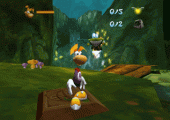
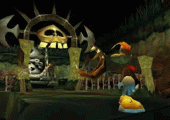
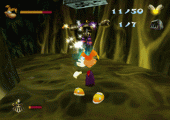
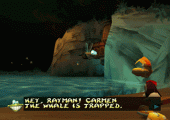
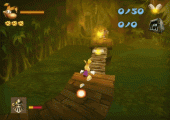
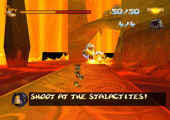
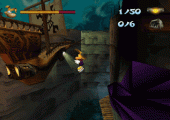
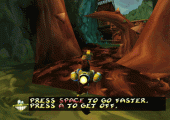
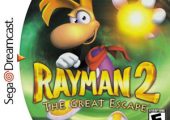
Recent Comments